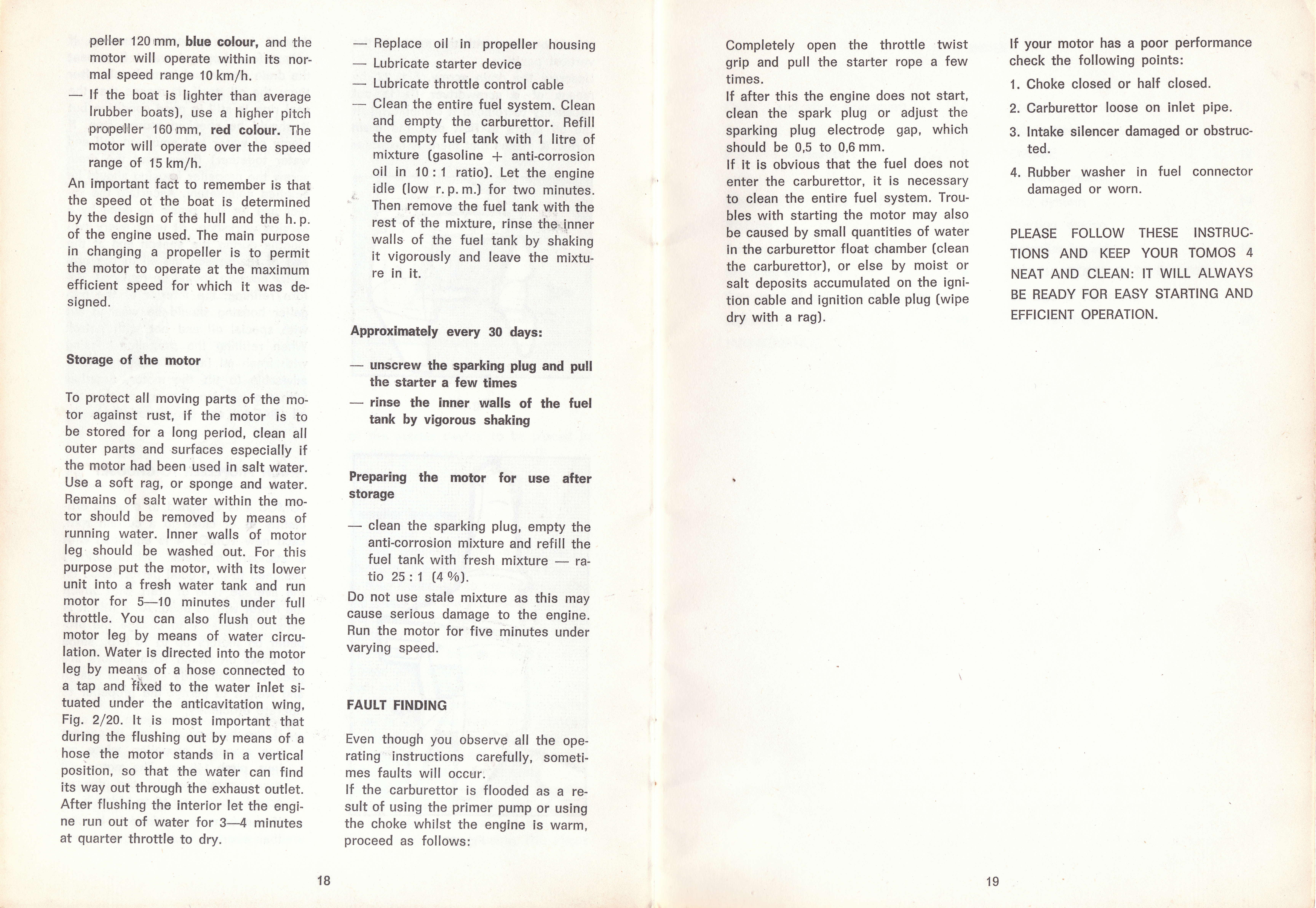
3 minute read
Hand pump
pe,l'leir 120imrm, blue colour, a'n,d the motor will operate within its normal speed range 10 km/h lf the boat is lighter than average lrubber boats), use a higher pitch rp,rorpeililer 160 ,nnm, red colour. Tihe motor will operate over the speed range of 15 km/h. An important fact to remember is that the speed ot the boat is determined by the design of the hull and the h. p. of the engine used. The main purpose in changing a propeller is to perrnit the motor to operate at the maximum efficient speed for which it was des igned.
Storage of the motor
To protect all moving parts of the motor against rust, if the motor is to be stored for a long period, clean all outer parts and surfaces especially if the motor had been used in salt water. Use a soft rag, or sponge and water. Remains of salt water within the motor should be removed by means of running water. Inner walls of motor leg should be washed out. For this purpose put the motor, with its lower unit into a fresh water tank and run motor for 5-10 minutes under full throttle. You can also f lush out the motor leg by means of water circulation. Water is directed into the motor Ieg by means of a hose connected to a tap and iiked to the water inlet situated under the anticavitation wing, Fig.2/20. lt is most important that during the flushing out by means of a hose the motor stands in a vertical position, so that the water can f ind its way out through the exhaust outlet. After flushing the interior let the engine run out of water for B-4 minutes at quarter throttle to dry. Replace oil' in propeller housing
Lubricate starter device
Lubnicate throttle control cable
Clean the entire fuel system. Clean and empty the carburettor. Refill the empty fuel tank with 1 litre of mixture (gasoline + anti-corrosion oil in 10 : 1 ratio). Let the engine idle (low r.p.m.) for two minutes. 'n Then remove the fuel tank with the rest of the mixture, rinse the..inner walls of the fuel tank by shaking it vigorously and leave the mixture in it.
Approxi,mately every g0 days:
rmrgcysltry the sparking p|ug and pull the starter a few tiimes rlnse the inner walls of the fuel ta'nrk by vi,g,orous shaking
Preparing the motor for u$e after storage
clean the sparking plug, empty the anti-corrosion mixture and refill the fuel tank with fresh mlxture ratio 25 : 1 (4 o/o). Do not use stale mixture as this may cause serious damage to the engine. Run the motor for five minutes under varying speed
FAULT FINDING
Even though you observe all the operating instructions carefully, sometimes faults will occur. lf the carburettor is flooded as a result of using the primer pump or using the choke whifst the engine is warm, proceed as follows: Completely open the throttle twist grip and pull the starter rope a few times. lf after this the engine does not start, clean the spark plug or adjust the sparking plug electrodg gap, which should be 0,5 to 0,6 mm, lf it is obvious that the fuel does not enter the carburettor, it is necessary to clean the entire fuel system. Troubles with starting the motor may also be caused by small quantities of water in the carburettor float chamber (clean the carburettor), or else by moist or salt deposits accumulated on the ignition cable and ignition cable plug (wipe dry with a rag). lf your motor has a poor performance check the following points: 1. Choke closed or half closed. 2. Carburettor loose on inlet pipe. 3. Intake silencer damaged or obstructed. 4. Rubber washer in fuel connector damaged or worn.
PLEASE FOLLOW THESE INSTRUC. TIONS AND KEEP YOUR TOMOS 4 NEAT AND CLEAN: IT WILL ALWAYS BE READY FOR EASY STARTING AND EFFICIENT OPERATION.




